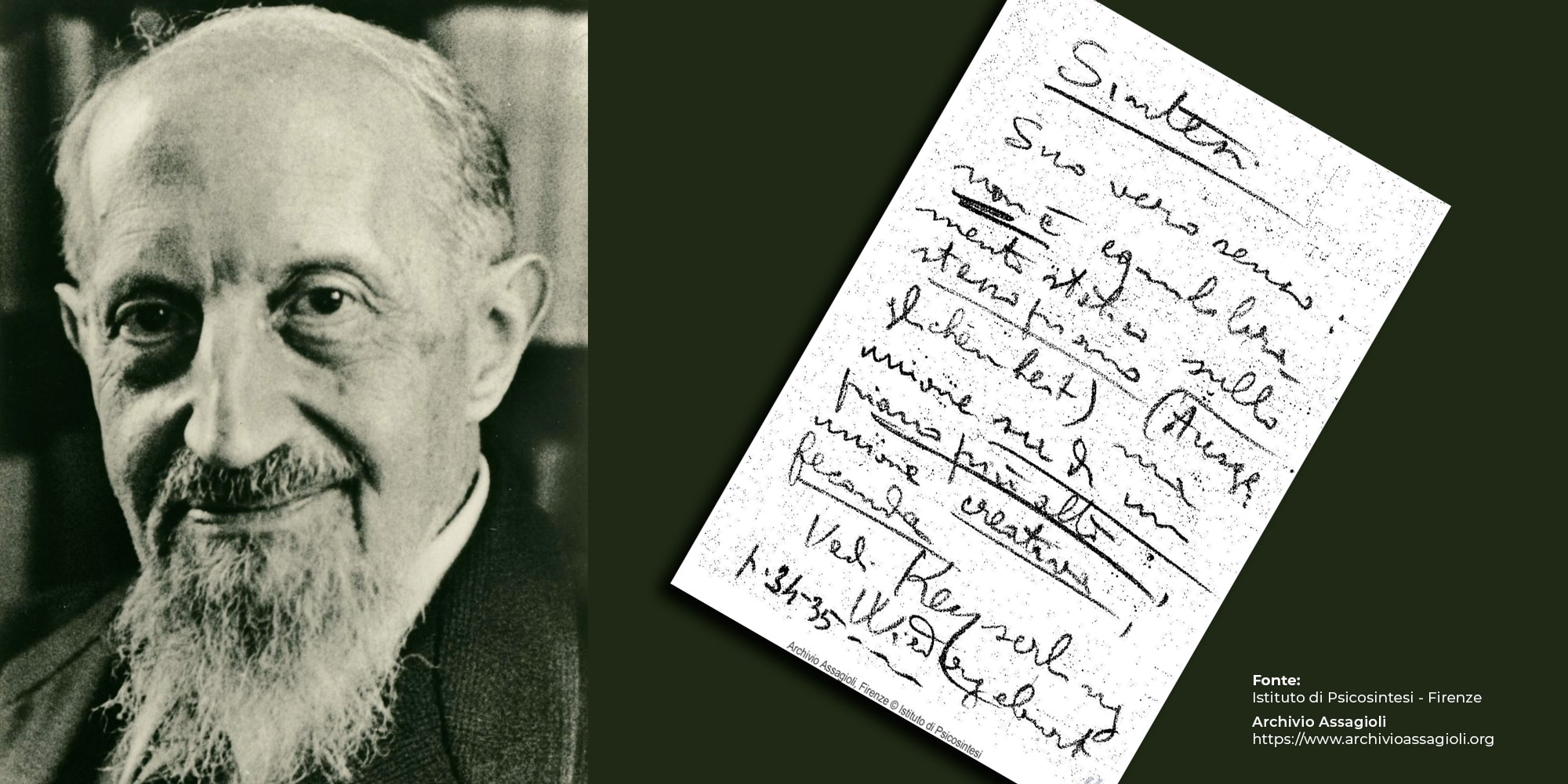
The central core of psychosynthesis
Having explored what attitudes Psychosynthesis adopts in its relationship with the landscape that surrounds it (cfr. “Can we define psychosynthesis?”), let’s now see what vision proposes regarding the internal relations which characterize each individual. Psychosynthesis is therefore also:
- a bio-psycho-(socio)-spiritual conception of the human being (hence the most complete definition of bio-psychosynthesis);
- a dynamic, and one could say dramatic, conception of psychic life, as a struggle between a multiplicity of rebellious and contradictory forces (called “parts” or subpersonalities: the actors) and a unifying center (the I-Self: the director-author) which tends to dominate them, to compose them in harmony, to use them (this is the action of will) in the most useful and creative ways;
- a set of techniques and methods of psychological action, aimed at promoting the integration and harmonious development of the human personality.
Although Psychosynthesis incorporates – both technically and methodologically – the contributions of various other therapeutic, educational and self-training approaches, it is important to keep in mind that the central core that forms its essence is original. Otherwise there is the risk of presenting a distorted and diluted vision.
This is very important: Psychosynthesis is not a heterogeneous eclecticism, we are not making a fruit salad! Psychosynthesis is a systemic, complex and synthetic vision of the human being, mainly represented in the two fundamental diagrams (the Egg diagram and the star of psychological functions) and in the seven fundamental experiences that constitute the “sine qua non” of its training.


Let’s see briefly what these fundamental experiences consist of:
- The first one, Disidentification, is about creating more space between us and our different ways of being, the different roles, or parts, we play in life (the so-called subpersonalities).
- It is a process of liberation that gradually leads us to the second experience: the discovery, the unveiling of who we really are, of our center: our “I” or personal self.
- And the more we free ourselves from old or inappropriate masks, the more we have the possibility of breathing, of moving. This authentic and natural movement of our being is what we call “Will”: the third experience. This is an important point: we are not just aware and passive observers, it is not simply a matter of contemplating. We are living beings, alive, vital and therefore our true nature is also to move, to flourish, to express ourselves: engaging, creating, working, loving, serving…
- and in this way, becoming more and more what we may be, realizing our Ideal Model, the full expression of our unique potential. This is the fourth experience of Psychosynthesis.
- The fifth is Synthesis, a very important one! The process of organization, integration and synthesis is the guiding principle of all Psychosynthesis. And this process is also the path that leads us safely, meaning without psychological splits, without fanaticism and exaltation, to the last two experiences: the superconscious and the Self.
- The Superconscious is the noetic, transpersonal dimension of the personality. All the highest potentialities of human nature reside in it: not only the spiritual or religious experiences, but also the impulses to heroic and ethical action, the courage to go beyond the known, the aesthetic experiences and artistic creations, the great scientific intuitions, the highest sentiments and values… always reminding us to distinguish these existential and archetypal experiences from the doctrines, beliefs and institutions that human beings then derive from them.
- Finally, the last experience: Self. The Self is the most extensive and mature center of synthesis of all our individuality; the instance that can contain our totality and completeness. It is actually very difficult to speak about the Self. Language can only define “objects”, and it is insufficient to understand the “subject”, the Self. Other forms of expression (poetry, music, art in general) are better able to indicate what the Self is.
